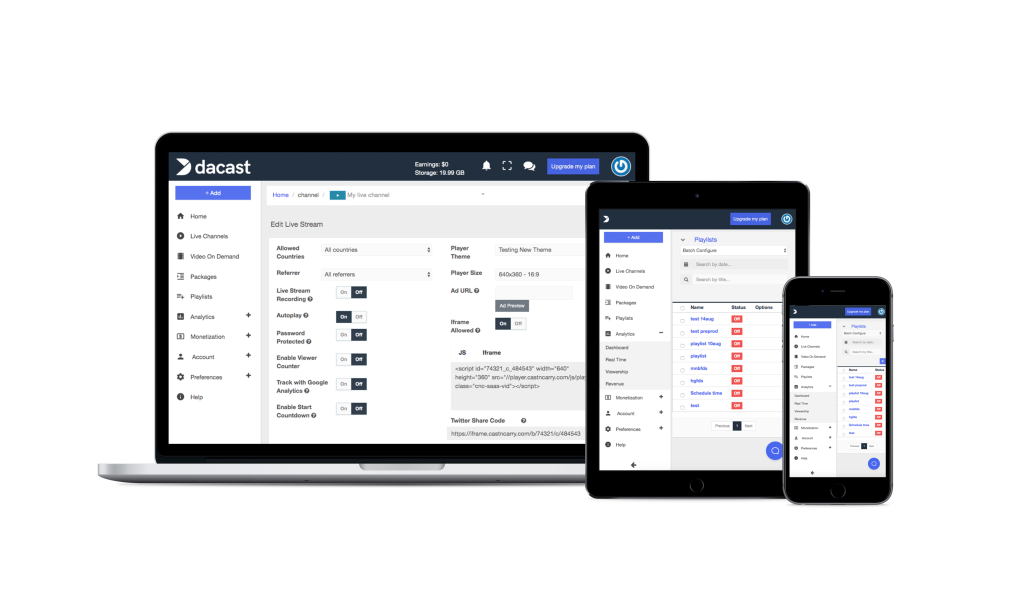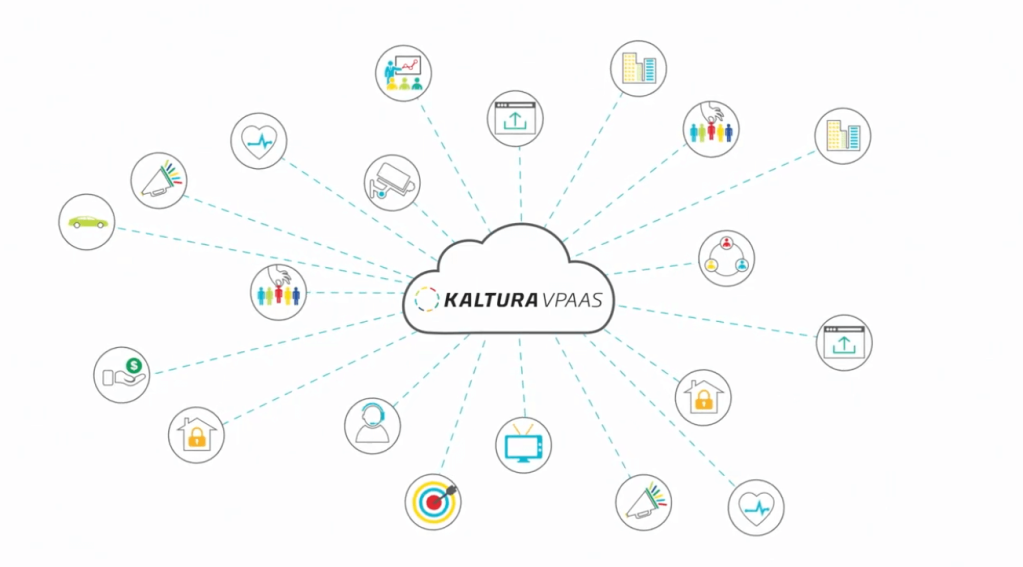AVOD: The Definitive Guide to Ad-Based Video on Demand
Video content plays many roles in the professional world. Some businesses and organizations use videos for sales and marketing, and others use it to host remote events or training sessions. Since trends in online video streaming are on the rise, many businesses and professional content creators are monetizing on-demand videos using revenue models like AVOD (ad-based video on demand.)
There are a few types of video monetization, but today we’re going to focus on AVOD. We will define this monetization method and talk about how it would look in action.
We’ll also cover why it benefits you to use a professional solution to host and monetize your videos with examples of three hosting platforms that are equipped with AVOD capabilities.
Table of Contents:
- 3 Monetization Methods: AVOD, SVOD, and TVOD
- What is Video on Demand?
- What is AVOD?
- When to Monetize with AVOD
- Why You Should Use AVOD with a Professional Video Hosting Platform
- Video Hosting Platforms with AVOD Capabilities
- FAQs
- Conclusion
3 Monetization Methods: AVOD, SVOD, and TVOD


AVOD, TVOD, and SVOD are the three main types of video monetization models. It is important to understand the distinctions between these methods before we dive into AVOD.
The major difference between AVOD and SVOD service is that AVOD provides video content free of charge. However, it embeds advertisements within the content as a way of monetization. On the other hand, SVOD operates based on subscription billing. The third monetization model, TVOD, monetizes content on a one-time payment basis.
Each method is defined as follows:
- AVOD: Ad-based video on demand (AVOD) is one of the monetization models that serves advertisements. For example, YouTube’s monetization model uses AVOD.
- SVOD: Subscription-based video on demand (SVOD) is a monetization method that allows viewers to subscribe to your content on an annual, quarterly, or monthly basis. Some SVOD services are ad-free, while others aren’t.
- TVOD: Transactional video on demand (TVOD) is a pay per view monetization model where you charge viewers for each piece of content they view. They can either rent video content to gain access for a limited time or they can pay a one time fee for permanent, unlimited access.
Please keep in mind that there is no “right” way to monetize your videos. You should choose what makes the most sense in terms of what your content entails and what your target audience is willing to commit to consuming the content.
You can decide to pick any one of the monetization models listed above or you can combine them to create a system that works best for your business model.
Combining the different monetization models is known as Hybrid video on demand (HVOD). While HVOD is not considered one of the major monetization methods, it is worth mentioning because it’s still a good way to diversify your revenue stream by combining different approaches to VOD services.
What is Video on Demand?
Video on demand, which is often referred to as “VOD,” is almost exactly what it sounds like: it is uploaded video content that is accessed on demand.
Some popular VOD streaming services include Youtube, Disney+, Hulu, and Netflix. These are services that viewers pay for in a few different ways.
Disney+ and Netflix users pay a standard subscription fee. Youtube and Hulu viewers “pay” by watching ads in addition to a standard subscription model.
Professional broadcasters use advanced VOD hosting solutions to build VOD platforms.
What is AVOD?
AVOD is short for ad-based video on demand. This is a monetization method that serves ads to your viewers as opposed to having them pay a fee for watching your content.
Think about the days when we only had satellite, cable, or even antenna television. Programs were interrupted several times to show you a commercial. AVOD streaming model is very similar to that.
Advertisers will pay you a fee for every ad rendered on your video. There are streaming platforms that are set up to automate the transactions between content creators and advertisers, so you don’t typically have to seek out or negotiate deals with the advertisers.
This type of video monetization model was popularized with YouTube, but it has moved into the world of professional content creation. Besides YouTube, some other video monetization platforms include Peacock, Tubi, Pluto TV, Amazon Prime, etc.
Businesses and professional organizations that set out to monetize their content with AVOD streaming can also use tools that are built into their website hosts or professional video hosting platforms.
If you want to monetize your video content, you can also use video hosting platforms that support AVOD services. Some of these platforms include Dacast and Muvi.
While many professional hosting platforms offer secure paywalls, this is not something you’ll really need if you’re planning to use AVOD streaming exclusively.
When to Monetize with AVOD


Not every video you upload should be monetized. For example, internal training videos or employee resources should not be monetized with ads (or at all). These pieces of content are investments that you’re making in your business.
However, if your goal in creating content is to make money, you’ll want to create premium content that is worth paying for. Although watching a 30-second advertisement doesn’t require your users to open their wallets, it does cost them their time.
You can use AVOD streaming to monetize content that provides value to your audience in a multitude of ways. The content could be educational or it could be purely entertaining.
Serving ads on a promotional video for your business isn’t in the best taste, but an industry-specific “how-to” or “crash course” is definitely ad-worthy.
When it comes to using ads for monetization videos, remember that people don’t always enjoy commercials or advertisements. As such, you have to showcase ads tastefully so that you do not ruin the viewer’s experience. In order to give viewers the option to either save money or skip ads, some businesses use AVOD video ads monetization in combination with SVOD.
Hulu is a streaming service—not to be confused with a professional video hosting platform which we’ll touch upon shortly—that uses an interesting mix between AVOD and SVOD, meaning that it offers free and paid content. If you’re not familiar, Hulu is a video on demand streaming service that offers a collection of movies, series, documentaries, and more.
There are two general pricing plans for Hulu: with ads and without ads. Both of these packages offer unlimited streaming, but as their names suggest, one has ads and the other does not.
Both of these packages require monthly subscriptions. Users can pay an additional $7/month to eliminate ads from their programs. Hulu may be making the same amount of money on both of these users, but the ad-free experience is for viewers who are willing and able to pay for convenience and luxury.
The monetization model you should go with really boils down to your audience.
Will your viewers feel that the content in the video is worth paying for? Is your target audience able to afford subscription models or to pay as they go? Will your viewers be frustrated by ads?
If it makes sense for both your business and your audience, AVOD models can be a great way to monetize your existing content and earn revenue.
Why You Should Use AVOD with a Professional Video Hosting Platform


A major claim for many professional video hosting platforms is that you can stream ad-free. As we mentioned, there are many reasons for using video content in the professional world, and sometimes, ads hinder the viewers’ experience.
However, if your goal is to monetize your content, using a professional video hosting platform that gives you the option to use ads is a bonus. YouTube is very well known for its ad-based monetization model, but it comes with some pesky restrictions.
Aside from the fact that you lose ownership of your content by broadcasting via YouTube and other free platforms, you must deal with time constraints and limitations on content.
YouTube also requires that you meet milestones before opting into monetization. You must have 1000 subscribers and 4000 hours of watch time within a 12-month period.
When you host with a professional online video platform, you can start monetizing with AVOD from the get-go. There’s no jumping through hoops or waiting until you’re allowed to monetize.
Hosting with a professional platform puts you in control.
Video Hosting Platforms with AVOD Capabilities
There are several online video platforms that are equipped with monetization capabilities, but not all of them include ad-based video on demand.
Here are a few professional platforms that offer AVOD streaming tools.
1. Dacast


Dacast is an online video platform that fully supports ad-based video on demand. There are built-in tools for AVOD, but the platform is easily customizable with both player and video APIs.
This means that if the native AVOD tools aren’t exactly what you’re looking for, you can mesh the features with external features to make it work better for you.
In addition to AVOD, Dacast supports SVOD and TVOD with a new and improved secure paywall. Even if you’re leaning towards AVOD, it is nice to have these options available if you decide to shift your approach in the future.
Dacast is equipped with advanced video hosting functions and is best suited for professional broadcasters. In addition to VOD hosting, Dacast also offers live streaming services.
2. Muvi


Muvi is another professional video hosting platform with AVOD monetization capabilities. In addition to ad-based monetization, Muvi offers both SVOD and TVOD options with a secure paywall, as well.
Since its most basic plans start at around $400/month, Muvi is considered a high-end video hosting solution, and it is definitely best suited for professional broadcasters.
3. Kaltura


Kaltura is a highly customizable video hosting platform that does not come with native AVOD capabilities. However, you can easily use integrations with external services to set up AVOD.
The beauty of this platform is that the customization options give you freedom and control over your video monetization. On the flip side, some users report that all of the possible customizations and features make the platform a bit difficult to navigate.
All of Kaltura’s plans are priced on a case-by-case basis.
FAQs
1. What is a VOD ad?
Video on demand advertising (VOD ad) is aired via on-demand platforms. In this type of advertising, users can directly click through ads to access the products or services being advertised. VOD ads are effective because they are tailored to reach a highly specific audience on video-on-demand platforms.
2. What is an example of AVOD?
As an entrepreneur, you can use streaming services or video hosting platforms for AVOD. An example of a streaming service that supports AVOD is YouTube, while examples of video hosting platforms with AVOD capabilities and monetization features include Dacast, Muvi, and Kaltura.
3. Is Netflix AVOD or SVOD?
Netflix is categorized as subscription video-on-demand because users have to pay monthly subscriptions in order to access particular video content. Other SVODs include Disney +, HBO Max, and Peacock.
4. What is the most popular AVOD platform?
One of the largest and most popular AVOD platforms is YouTube, with over 2.7 billion monthly visitors. Here are some other popular AVOD streaming platforms.
- Peacock
- Tubi
- Pluto TV
- Amazon Prime
5. What is the difference between live streaming and video on demand?
Live stream video content is transmitted in real time, so users cannot pause or forward. On some occasions, they might be able to rewind or save the video after the live stream has ended. On the other hand, video on demand content can be paused, played, or repeated at the user’s convenience.
Conclusion


Using AVOD is a fantastic way to monetize your long form videos without requiring your audience to pay for them directly. Charging a few seconds of your viewers’ time in exchange for your content seems fair since it helps you make a bit of ad revenue for the content you’ve worked so hard on.
Now that you have a clear idea of how AVOD differs from SVOD and TVOD and the benefits of monetizing with advertisements, you should be able to easily identify if it is the method for you.
Interested in testing Dacast’s ad-based monetization? Access this monetization feature with our 14-day risk-free trial. No credit card necessary.
For additional information on AVOD, TVOD and SVOD and discussions about the Dacast live and on-demand video hosting solution, please join our Dacast LinkedIn group. Chat with professionals and other users about our platform and its many features.


